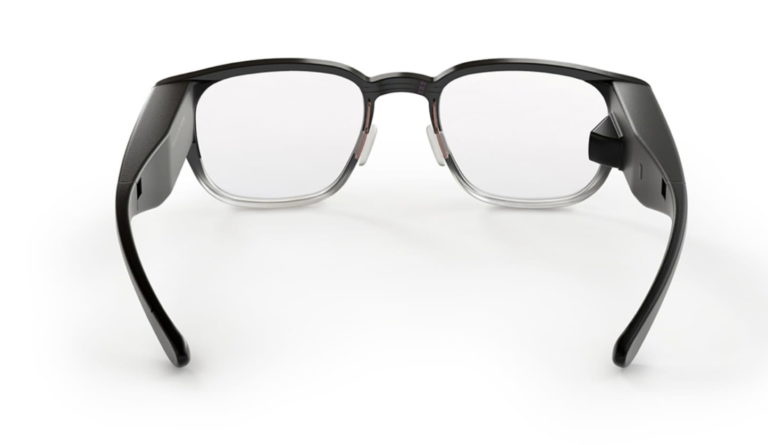
In October 2018, Kitchener Ontario-based North introduced consumer AR glasses called Focals. The company, then called Thalmic Labs, was founded by three friends: Stephen Lake, Matthew Bailey, and Aaron Grant. Its mission was to develop an EMG-based gesture controller, the Mio Armband, (which is still the most capable EMG controller ever offered to consumers), before pivoting into the perilous waters of augmented reality.
Detractors dismissed the Focals as just another re-spin of Google Glass, with the Verge dubbing it a ‘smartwatch for your face’.
But Focals had three elements that were extraordinary: they looked (more or less) like regular eyeglasses, they had a beautiful UI with sparse, clean screen elements, and a simplified controller that consisted of just a ring with a tiny joystick.
The Catch
But, alas, there was a fatal flaw — the display technology, even for its day, was sub-optimal. The doomed Google Glass, circa 2013, had a more stable display with over twice the resolution.
Focals used a fussy display technology called Laser Beam Scanning (LBS). So fussy, in fact, that to be fitted for the glasses, customers needed to have a 3D scan of their heads (which could only be done in two locations), and then return for a fine-tuning before getting their glasses. If the frames were not worn in the optimal position, the image would distort or completely disappear.
Much better technology existed (even diffractive optics lenses with OLED drivers were already available). So how could such a talented engineering team make such a poor choice? I have sometimes thought that the selection of the display may have been influenced by Intel.
Intel Capital was the lead investor in North’s $120 million series B financing. Intel, it may be remembered, demonstrated an AR glasses called ‘Vaunt’ in February 2018 (which also used LBS optics), and then (in classic Intel fashion), they abruptly canceled the project in April of that year. In December 2018, almost simultaneously with closing their series B, North announced that they had purchased the Intel Vaunt patent portfolio.
We will never know if Intel, either intentionally or not, influenced the choice of the display technology, but it would have been difficult for the North management to withstand even subtle pressure from its lead investor.
To the Rescue
Many people still wanted to try Focals, but the difficulty in getting fitted, and negative reviews about the optics, were too much to overcome. After just a year, the company withdrew the product in advance of releasing the Focals 2.0, which were to feature ten times the resolution of the original optics. Before this could happen, money ran short. Then, in June 2020, Google stepped in to buy the firm for somewhere around $180 million, which is certainly not a terrible number but was about equal to the funding the company had received to date.
So is that the end of the story? Perhaps not.
After a prolonged absence, Google seems to be interested once again in developing a consumer AR product. In fairness, the original Google Glass was actually never fully withdrawn from the market, and has always been available for enterprise. But in January, it was reported that Google had an internal project, codenamed ‘Iris’ to develop an immersive wearable, and it recently acquired Raxium, a microLED developer, for a rumored price tag of $1 billion.
Then, at the Google I/O conference in June, the company showed a gorgeous concept video of an AR glasses experience which included real-time language translation.
Perhaps most interestingly, Google is posting job openings for both hardware and software AR engineers for their Waterloo, OT facility, which is the former home of North.
So it is possible that the final chapters of the saga of Focals — a product that came so close to transforming an industry — are not yet written.
 Dovid Schick is CEO and founder of Tap Systems.
Dovid Schick is CEO and founder of Tap Systems.

